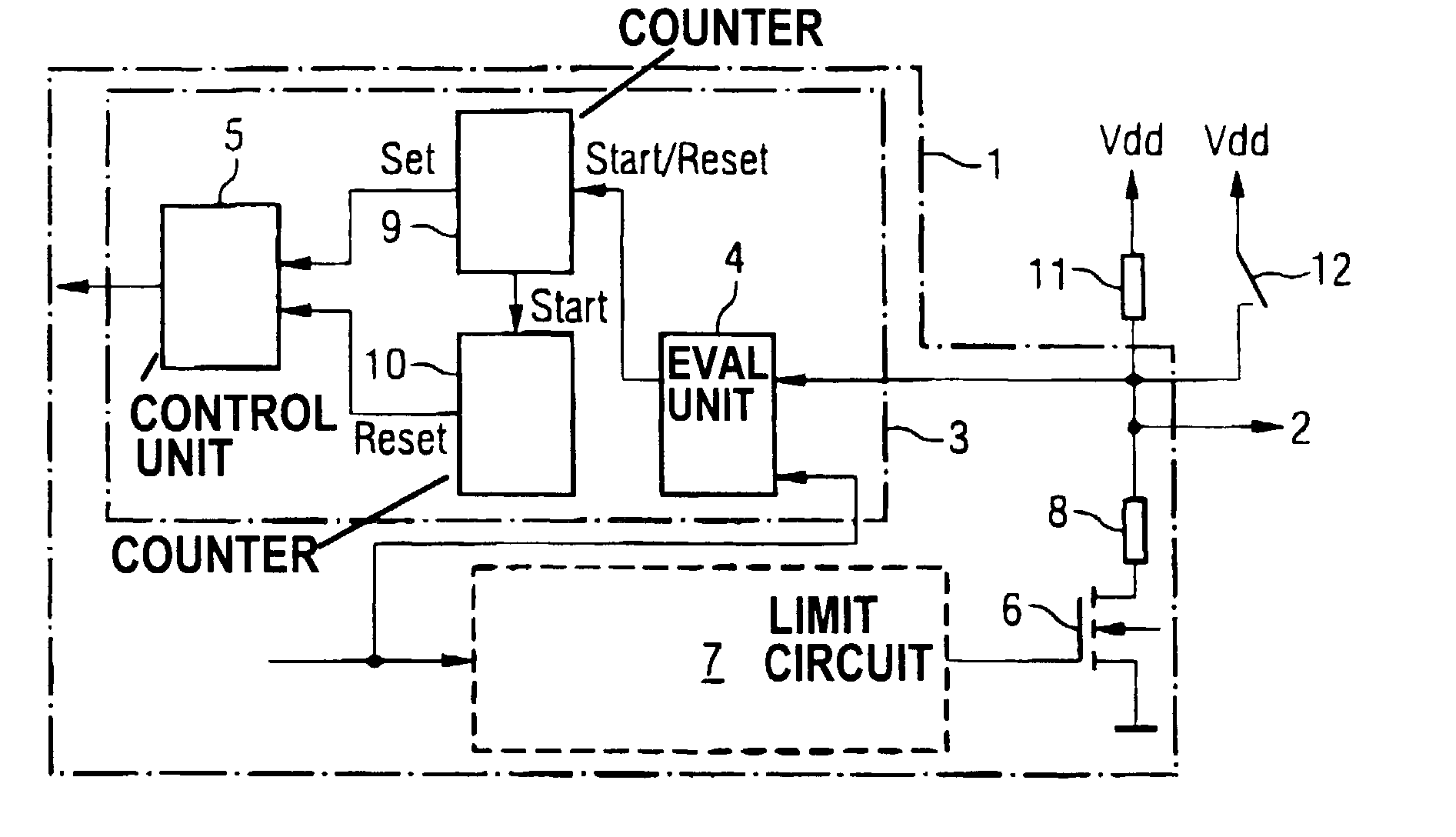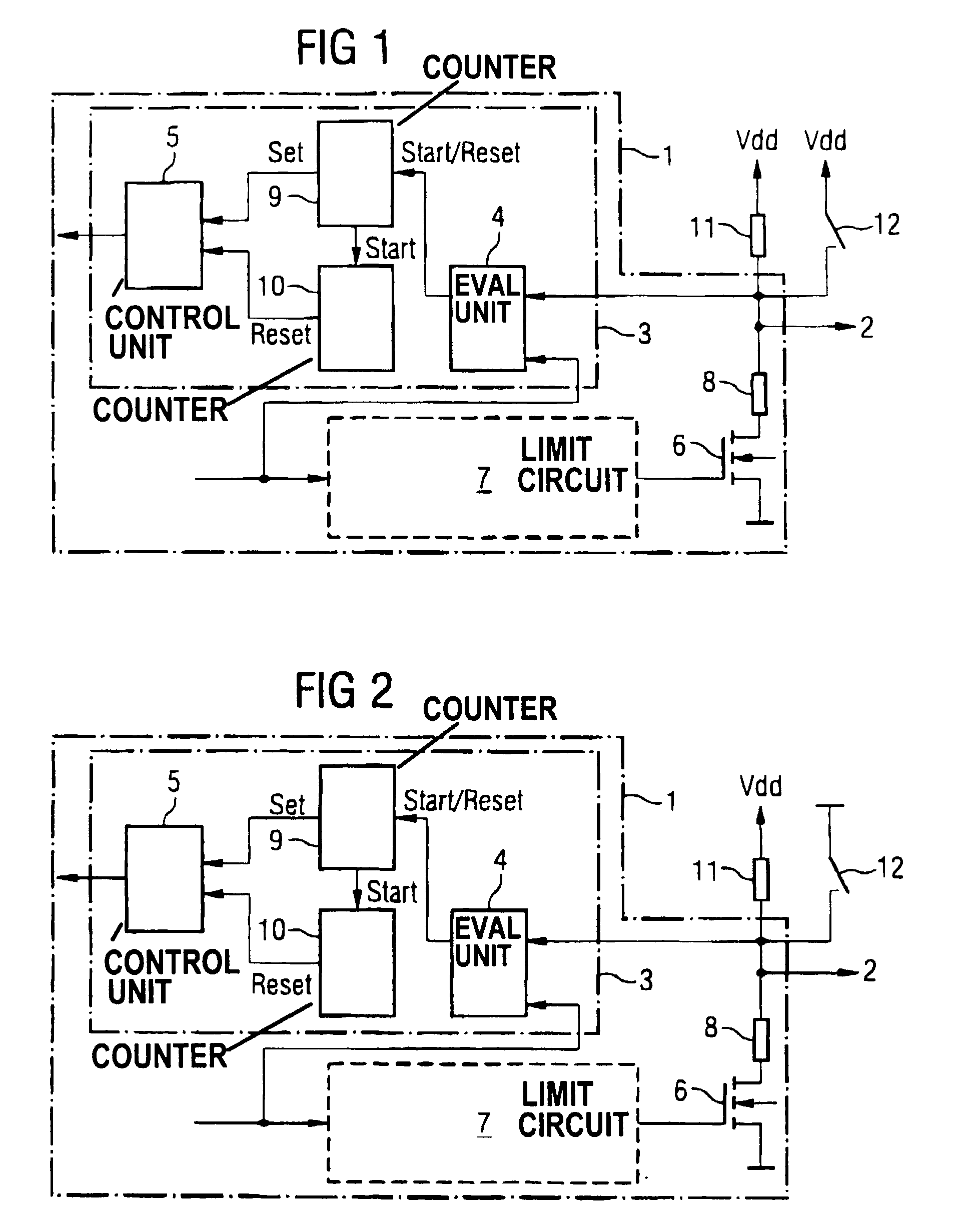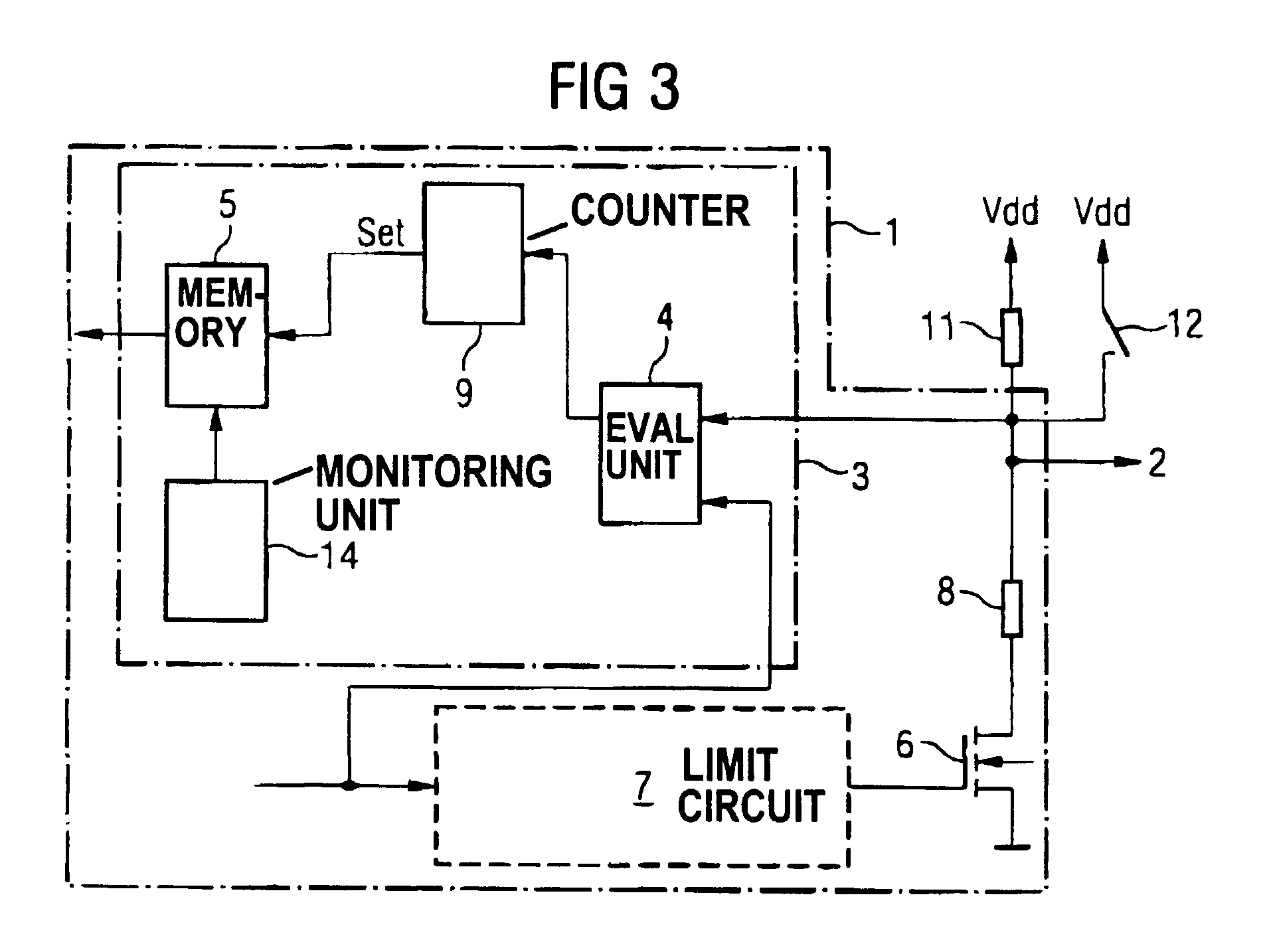Method for switching from a first operating condition of an integrated circuit to a second operating condition of the integrated circuit
a technology of integrated circuit and operating condition, which is applied in the direction of noise figure or signal-to-noise ratio measurement, pulse technique, instruments, etc., can solve the problems of consuming power of comparator, requiring greater outlay, and inability to make available the full voltage range, etc., to achieve the effect of reducing or avoiding these difficulties
- Summary
- Abstract
- Description
- Claims
- Application Information
AI Technical Summary
Benefits of technology
Problems solved by technology
Method used
Image
Examples
first embodiment
[0027] FIG. 1 shows the inventive integrated circuit 1. This integrated circuit can fulfill a number of functions. In the present example, the integrated circuit corresponds to an integrated sensor, for example, an integrated magnetic field sensor as disclosed in German patent applications 101 17 382.2, 101 17 383.0 or 101 17 384.9, whose contents are herewith incorporated by reference. Such an integrated sensor usually has at least three essential operating conditions. On the one hand, this is a type of "raw condition" in which the sensor can still be configured. In this condition, the sensor can already work normally but the sensor can be switched from operating condition into a further, second operating condition.
[0028] This second operating condition makes it possible to load specific parameter sets and to observe specific internal events. The operator of the sensor can thus optimally adapt the sensor to the respective measurement task and permanently program the optimum operati...
second embodiment
[0037] FIG. 2 shows a second embodiment of the inventive integrated circuit. This second embodiment of the inventive integrated circuit corresponds to the first embodiment of the inventive integrated circuit as described above, except for the following differences.
[0038] In this second embodiment, the first operating condition is designed such that a high level is generated at the circuit output 2 as an output signal. Accordingly, the open-drain output transistor 6 is inhibited. Instead of comprising an AND gate, this embodiment comprises a NOR gate as an evaluation unit 4.
[0039] When the user wishes to switch the integrated circuit 1 into the second operating condition, a low level is externally applied to the circuit output 2. This is indicated in FIG. 2 in that the user connects to circuit output 2 to ground by closing the switch 12. The evaluation unit 4 now queries the condition that the open-drain output transistor 6 is inhibited and that the voltage at the circuit output 2 li...
third embodiment
[0040] FIG. 3 shows a further embodiment of the inventive integrated circuit. This third embodiment of the inventive integrated circuit corresponds to the first embodiment of the inventive integrated circuit described above, except for the following differences.
[0041] Instead of the counter 10, the embodiment of the integrated circuit shown in FIG. 3 has a monitoring unit 14. The monitoring unit 14 serves the purpose of checking at least one criterion on whose basis a decision is made as to whether the integrated circuit is reset into the first operating condition or is placed into a further operating condition. For example, the integrated circuit can in turn be reset after the application of the operating voltage. Further possibilities include introducing a separate reset command or to utilize other, inherently forbidden conditions such as over-voltages and under-voltages for this.
[0042] The inventive method or the inventive integrated circuit have the advantage that the switching ...
PUM
 Login to View More
Login to View More Abstract
Description
Claims
Application Information
 Login to View More
Login to View More - R&D
- Intellectual Property
- Life Sciences
- Materials
- Tech Scout
- Unparalleled Data Quality
- Higher Quality Content
- 60% Fewer Hallucinations
Browse by: Latest US Patents, China's latest patents, Technical Efficacy Thesaurus, Application Domain, Technology Topic, Popular Technical Reports.
© 2025 PatSnap. All rights reserved.Legal|Privacy policy|Modern Slavery Act Transparency Statement|Sitemap|About US| Contact US: help@patsnap.com



